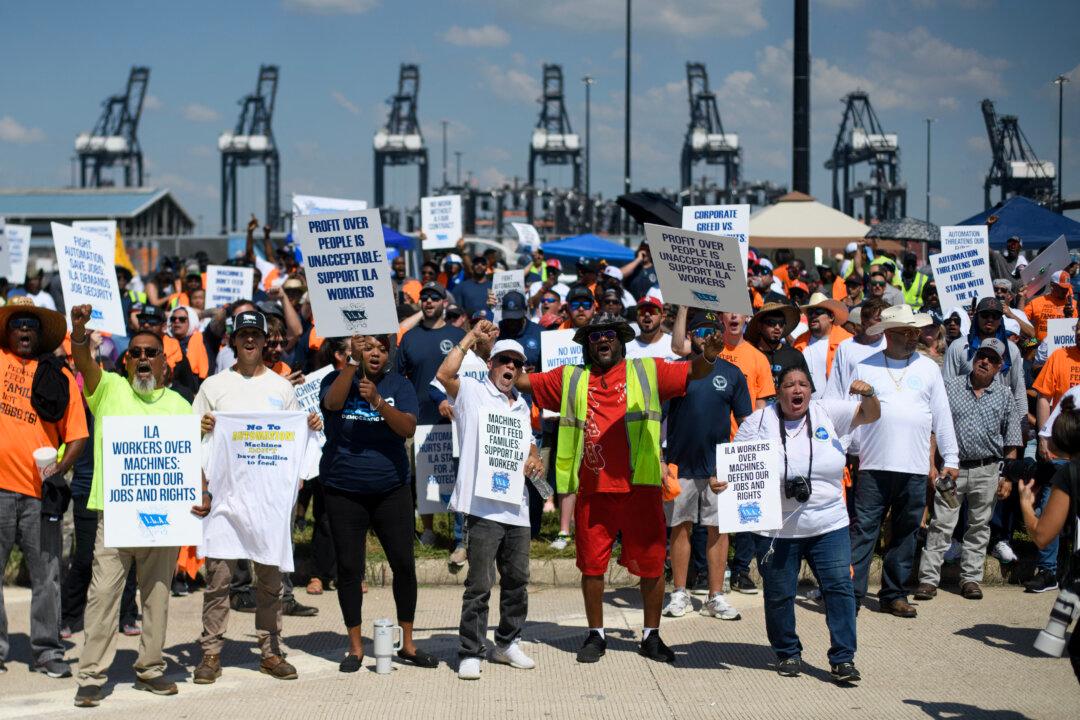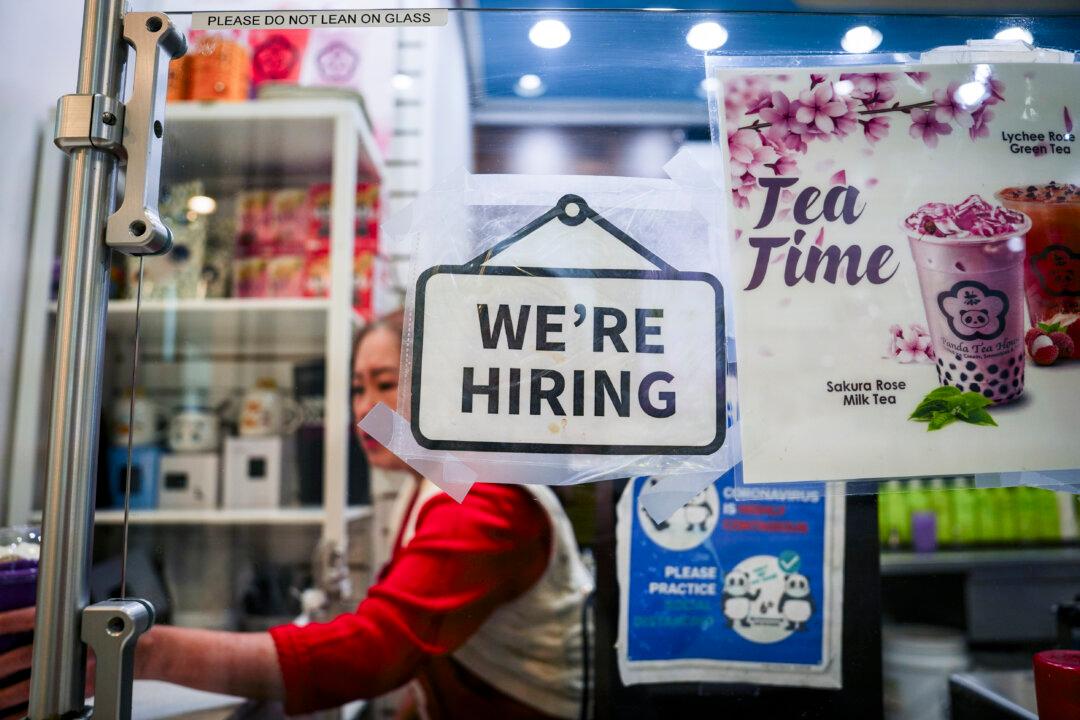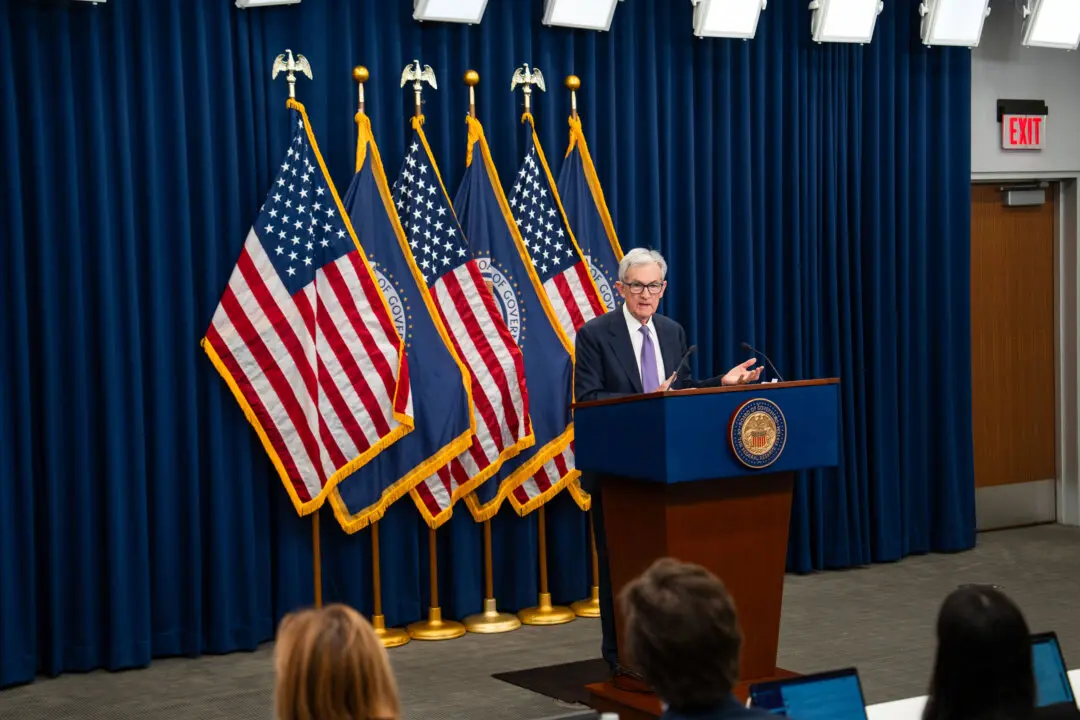A wrench may have been thrown in the Federal Reserve’s inflation fight as thousands of Atlantic and Gulf coast port workers have now gone on strike.
The International Longshoremen’s Association (ILA), a union of dock and maritime workers, hit the picket lines at midnight on the night of Sept. 30, shuttering ports from Maine to Texas. ILA officials rejected counteroffers from the U.S. Maritime Alliance that would have provided a nearly 50 percent wage increase, better health care and retirement benefits, and protections regarding automation and semi-automation.





